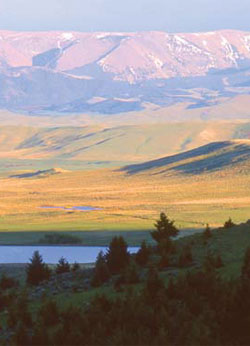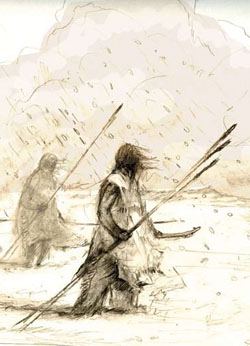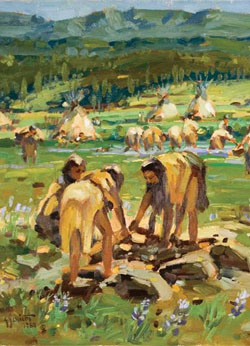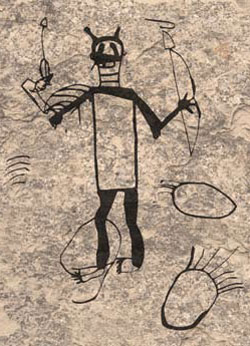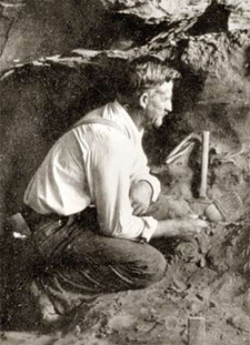Montana: Stories of the Land
Companion Website and Online Teacher's Guide
Chapter 2 - People of the Dog Days
Chapter 1 - Montana: Where the Land Writes History
Chapter 2 - People of the Dog Days
Chapter 3 - From Dog Days to Horse Warriors
Chapter 4 - Newcomers Explore the Region
Chapter 5 - Beaver, Bison, and Black Robes
Chapter 6 - Montana's Gold and Silver Boom
Chapter 7 - Two Worlds Collide
Chapter 8 - Livestock and the Open Range
Chapter 9 - Railroads Link Montana to the Nation
Chapter 10 - Politics and the Copper Kings
Chapter 11 - The Early Reservation Years
Chapter 12 - Logging in the "High Lonesome"
Chapter 13 - Homesteading This Dry Land
Chapter 14 - Towns Have Lives, Too
Chapter 15 - Progressive Montana
Chapter 16 - Montana and World War I
Chapter 17 - Montanans on the Move
Chapter 18 - The Great Depression Transforms Montana
Chapter 19 - World War II in Montana
Chapter 20 - Building a New Montana
Chapter 21 - A People's Constitution
Chapter 22 - Living in a New Montana
Educator Resources
Educational Trunks
-
Stones and Bones: Prehistoric Tools from Montana’s Past from the Montana Historical Society. This trunk looks at the earliest evidence of Montana's human history through a study of casts and reproduction stone and bone tools from the Anzick collection found in Wilsall, Montana.
-
Prehistoric Life in Montana from the Montana Historical Society. This trunk focuses on Pictograph Cave to explore what life was like in Montana 10,000 to 12,000 years ago.
Takeaways
-
Inspired by reading specialist Tammy Elser, who was in turn inspired by SKC graduate Taylor Crawford, we've created a "Takeaway" bookmark for every chapter of Montana: Stories of the Land. Before starting a chapter, print and cut out these bookmarks and distribute them to your students. Ask them to use the Takeaway to summarize the GIST of what they learn from reading assigned sections of the chapter. Remind them that they don't have much room, so they'll need to think before they write down the most important idea they want to take away from the section. Learn a little more about the GIST strategy.
-
Even though we've created Takeaways for every chapter, we don't recommend you have your students complete a Takeaway for every section of every chapter they read. That would be exceedingly tedious. However, used appropriately, they can be a useful tool for encouraging reflection and teaching students how to summarize information.
Websites and Online Lesson Plans
-
New! Montana The Magazine of Western History Discussion Guides Articles from Montana The Magazine of Western History are great for use with high school students! To make teaching them easier, we are providing free links to selected articles along with discussion guides created by Montana teachers.
-
Making an Atlatl provides detailed instructions on how students can make atlatls and darts while learning more about the physics behind this ancient technology and the tremendous skill it took to hunt large games in the pre-contact era.
-
Montana Ancient Teachings: A Curriculum for Montana Archaeology and Prehistory offers an in-depth curriculum to introduce elementary and middle school students to the world of archaeology and to what archaeologists have learned about Montana prehistory through archaeology and related scientific disciplines.
-
Project Archaeology: Investigating the First Peoples, the Clovis Child Burial examines new findings about the Anzick site near Wilsall, the oldest documented archaeological site in North America. Designed for grades 8-12, the curriculum asks students to read current news reports, write an archaeology discovery report, debate the ethics of studying ancient human remains, write a persuasive essay and join students from across the nation in creating memorials to the Clovis Child.
-
The Montana Historical Society has created a lesson plan, "What They Left Behind," to accompany this PowerPoint presentation on the various types of archaeological sites found in Montana.
-
"Native American Trade Routes and the Barter Economy" includes two learning activities designed for use in grades seven through nine, Activity One, "Resources and Routes," focuses primarily on mapping pre-contact trade routes, with a special emphasis on Montana. Activity Two, "Trading Times," asks students to simulate the process through which various products from different regional tribes were bartered and disseminated to gain a better understanding of pre-contact barter economy and how it compares with the modern-day cash economy.
-
The National Park Service Archeology Program is a one-stop-shop for teachers seeking online activities for kids, lesson plans, informational resources, and links to other sites.
-
Salmon Lake State Park created "Ancient Highways-Native Byways," a lesson plan on early transportation corridors.
-
Find origin stories for many Montana tribes in Chapter 1 of Montana Tribal Histories: Educator Resource Guide, developed by Julie Cajune and published by the Indian Education Division of the Montana Office of Public Instruction.
Videos or DVDs
-
The Creation, Origin, Separation and Migration of the Crow Nation is part of a 5 DVD set on the Crow Tribe, created by the Western Heritage Center American Indian Tribal Histories Project.
-
The Cheyenne Creation Story is part of a 5 DVD set on the Northern Cheyenne tribe, created by the Western Heritage Center American Indian Tribal Histories Project.
Possible Field Trips: View the Map
-
First Peoples Buffalo Jump State Park, near Great Falls. (Related IEFA lesson plans are available.)
-
Madison Buffalo Jump State Park, near Three Forks. (Related IEFA lesson plans are available.)
-
Pictograph Cave State Park, near Billings. (Related IEFA lesson plans are available.)
-
Wahkpa Chu'gn Buffalo Jump, near Havre.
Chapter 2 Test and Answer Keys Page
The tests and answer keys are password protected.
You can contact us to receive the password:
- Martha Kohl - call (406) 444-4790 or email mkohl@mt.gov
- Melissa Hibbard - call (406) 444-4741 or email Melissa.Hibbard@mt.gov
Or, if you used the old system, the original username is now the new password. You will be asked for this case-sensitive password every time you open a new document.
Alignment to Social Studies Standards and Essential Understandings Regarding Montana Indians (EU)
